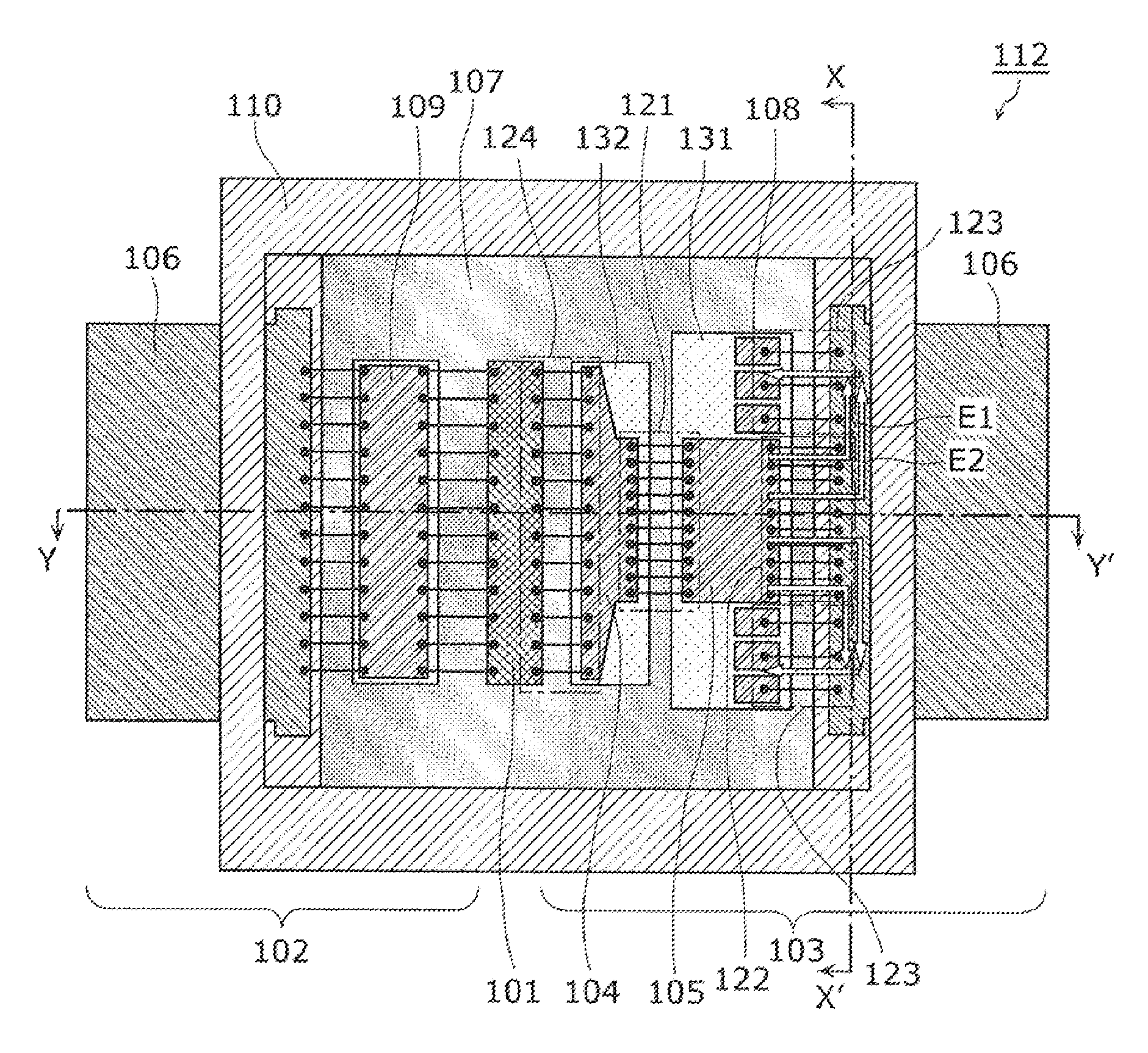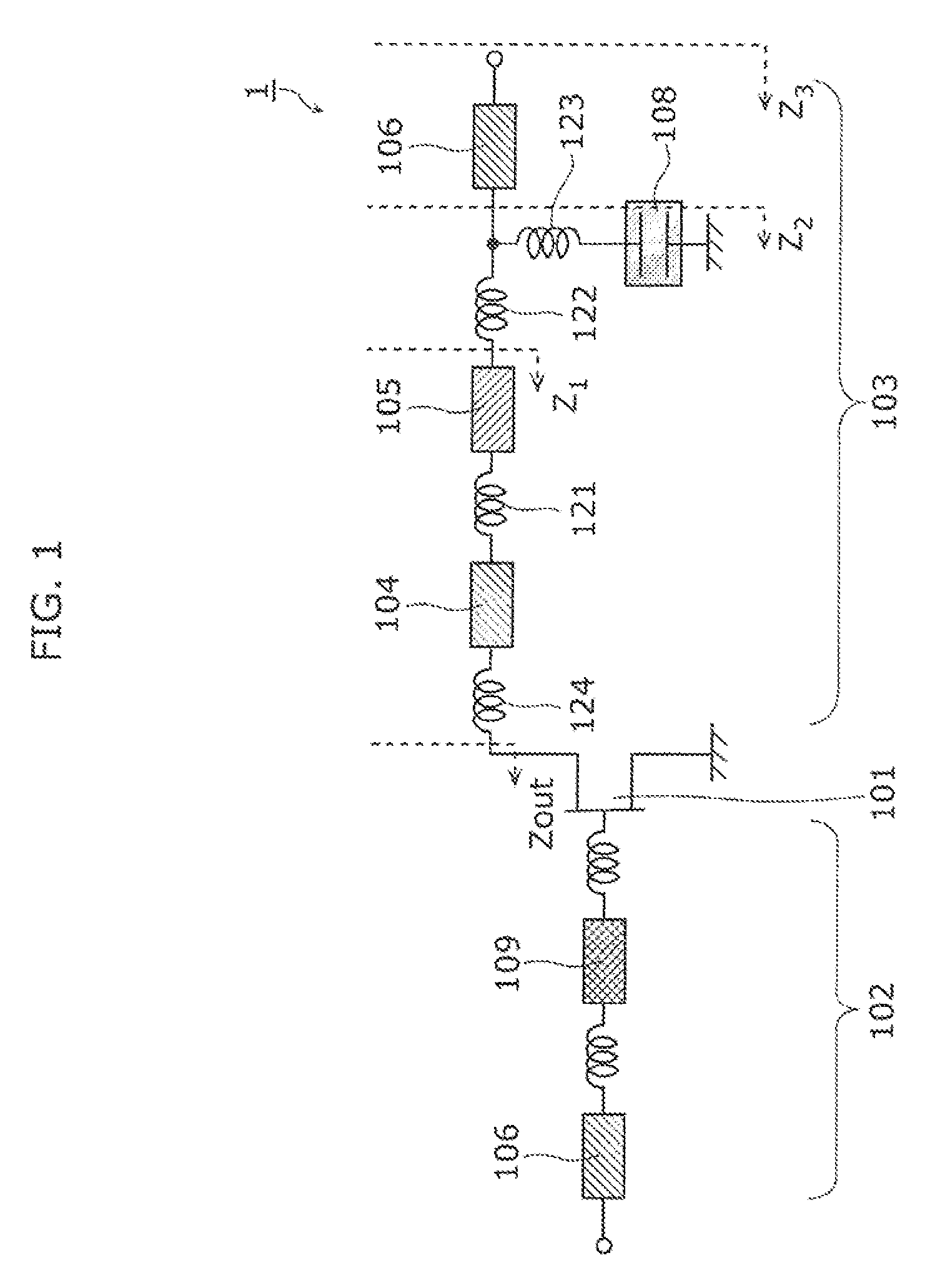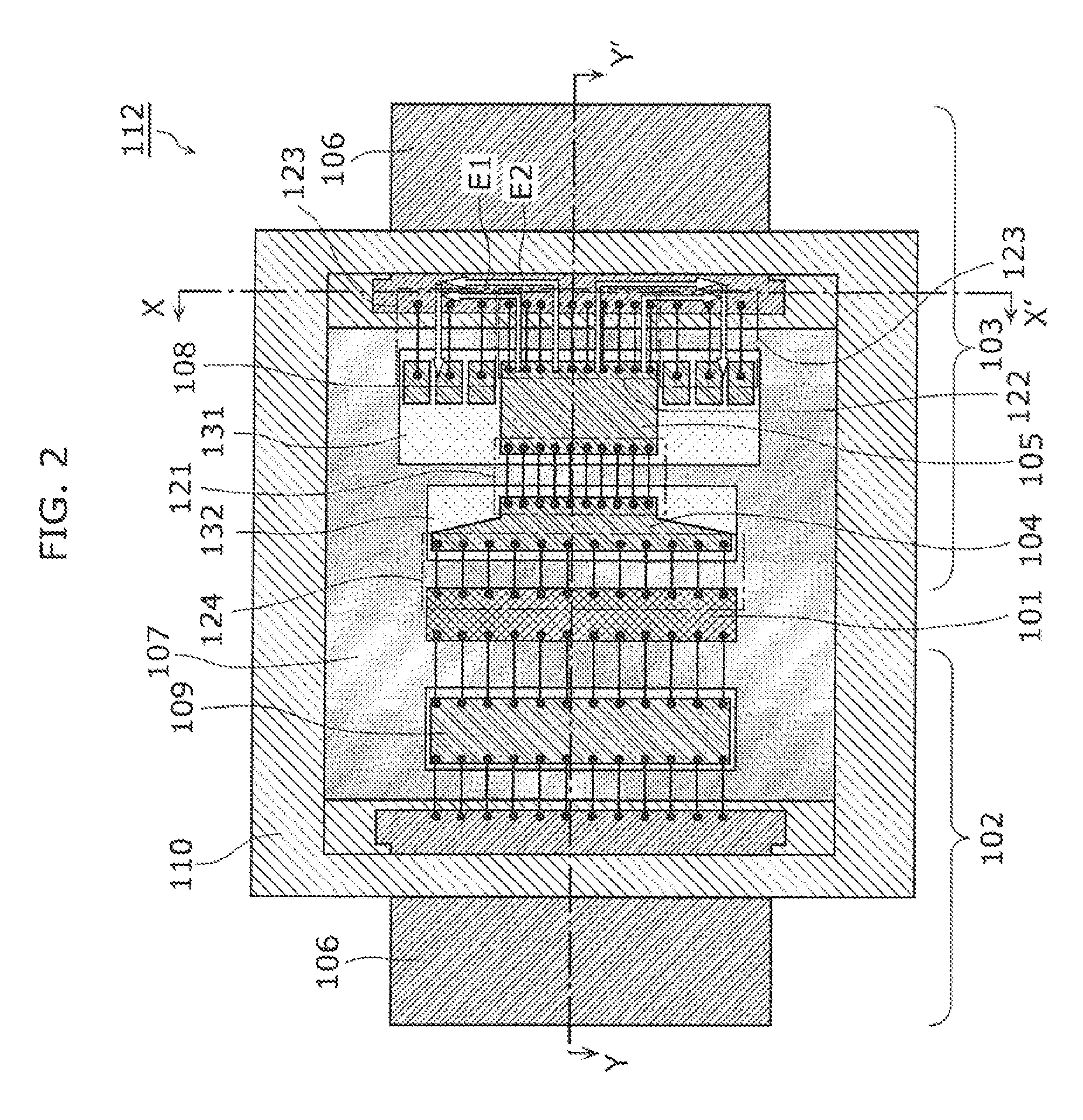Radio frequency amplifier circuit
a technology of amplifier circuit and frequency, applied in the direction of amplifier with semiconductor device/discharge tube, basic electric element, solid-state device, etc., can solve the problem of low input and output impedance, and achieve the effect of reducing electrical length, reducing electrical variation, and reducing loss of matching circui
- Summary
- Abstract
- Description
- Claims
- Application Information
AI Technical Summary
Benefits of technology
Problems solved by technology
Method used
Image
Examples
embodiment 1
[0043]FIG. 1 illustrates a circuit configuration of a radio frequency amplifier circuit according to Embodiment 1. A radio frequency amplifier circuit 1 according to the present embodiment includes a transistor 101, an input-side matching circuit 102 and an output-side matching circuit 103.
[0044]The transistor 101 has a configuration in which unit transistors are connected in parallel for the purpose of achieving a high power. As a result, the input and output impedances are low. For example, when the output exceeds 100 W, the input and output impedances are sometimes several ohms or lower. Therefore, when the transistor 101 is connected directly to an external circuit normalized to 50Ω, impedance mismatching occurs. In order to resolve this mismatching, the input side and the output side of the transistor 101 are connected to the input-side matching circuit 102 and the output-side matching circuit 103, respectively. The transistor 101 is an amplifier formed of a material such as, f...
embodiment 2
[0068]FIG. 6 illustrates a layout of a radio frequency amplifier circuit according to Embodiment 2. The radio frequency amplifier circuit according to the present embodiment is constituted by a transistor 101, an input-side matching circuit 102 and an output-side matching circuit 143. The radio frequency amplifier circuit according to the present embodiment is different from the radio frequency amplifier circuit 1 according to Embodiment 1 only in the configuration of the distributed constant line in the output-side matching circuit. The following description will be focused on points different from the radio frequency amplifier circuit 1 according to Embodiment 1.
[0069]The output-side matching circuit 143 includes a first distributed constant line 111, a lead terminal 106 for transmitting a signal to an outside of a package 212 receiving the radio frequency amplifier circuit and a capacitive element 108. An output terminal of the transistor 101 and an input side of the first distri...
embodiment 3
[0071]The present embodiment will be directed to a radio frequency amplifier circuit having a matching circuit in which a plurality of unit transmission lines, each having a dielectric distributed constant line and a capacitive element connected in parallel with a lead terminal, are provided in parallel.
[0072]FIG. 7 illustrates a layout of a radio frequency amplifier circuit according to Embodiment 3. The radio frequency amplifier circuit according to the present embodiment is constituted by transistors 101A and 101B, an input-side matching circuit 102 and an output-side matching circuit 153. The radio frequency amplifier circuit according to the present embodiment is different in configuration from the radio frequency amplifier circuit according to Embodiment 2 in that a matching circuit is disposed on an output side of each of a plurality of the transistors. The following description will be focused on points different from the radio frequency amplifier circuit 2 according to Embo...
PUM
 Login to View More
Login to View More Abstract
Description
Claims
Application Information
 Login to View More
Login to View More - R&D
- Intellectual Property
- Life Sciences
- Materials
- Tech Scout
- Unparalleled Data Quality
- Higher Quality Content
- 60% Fewer Hallucinations
Browse by: Latest US Patents, China's latest patents, Technical Efficacy Thesaurus, Application Domain, Technology Topic, Popular Technical Reports.
© 2025 PatSnap. All rights reserved.Legal|Privacy policy|Modern Slavery Act Transparency Statement|Sitemap|About US| Contact US: help@patsnap.com



